Explore the Best AI Image Gallery
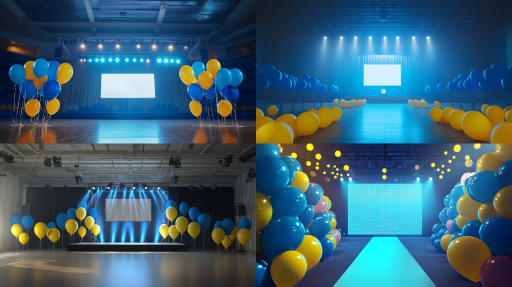
AI Images in Design: A New Era of Creativity and Ethics
Artificial Intelligence (AI) is rapidly transforming various sectors, and the creative industry is no exception. Among its numerous applications, AI-generated images stand out as a groundbreaking development that is changing how artists and designers create and interact with visual media.
The Impact of AI on the Creative Industry
AI images have opened new doors for creativity in design, allowing artists to expand their capabilities beyond traditional methods. By leveraging machine learning algorithms, artists can now generate images that mimic various styles, create original works based on prompts, or even enhance existing artworks with new elements.
- Enhanced Creativity: AI tools can help artists brainstorm and visualize their ideas by providing suggestions and variations that they may not have considered.
- Increased Efficiency: Automating repetitive tasks such as coloring or background generation allows designers to focus more on creative aspects of their work.
- Collaboration with Machines: Designers can collaborate with AI systems, treating them as co-creators rather than mere tools, which can lead to innovative outcomes.
For example, artists are using platforms like DALL-E and Midjourney to create stunning visuals quickly, enabling them to concentrate on messaging and branding. This collaborative approach not only enriches the creative process but also allows for rapid prototyping and iteration.
Potential Uses across Various Design Fields
The versatility of AI images resonates across several design disciplines:
- Graphic Design: AI can automatically generate logos, brochures, and other graphic assets tailored to specific brand identities.
- Fashion Design: Designers are experimenting with AI-generated patterns and fabrics, pushing the boundaries of traditional fashion design.
- Interior Design: AI-generated imagery helps visualize spaces in different styles, assisting clients in making informed design choices.
Such applications indicate that AI-generated images are not just helpful; they are becoming indispensable in various creative practices.
Ethical Considerations
Despite the clear advantages of AI in design, ethical questions arise concerning originality, authorship, and data use. Here are a few critical considerations:
- Creativity vs. Plagiarism: The fine line between inspiration and copying becomes blurred when AI generates images based on existing works. Who owns the rights to an AI-generated piece—its creator or the machine?
- Bias in Algorithms: AI systems learn from the data fed into them. If that data is biased, the generated images will reflect those biases, perpetuating stereotypes and misrepresentations.
- Job Displacement: As AI takes on more creative tasks, concerns arise regarding job displacement for traditional artists and designers.
Addressing these ethical issues requires ongoing dialogue among artists, technologists, and policymakers, ensuring that AI serves as a tool for enrichment rather than a replacement.
Future Trends in AI and Design
As technology advances, the relationship between AI and the design industry is likely to evolve further:
- Personalization: AI could enable hyper-personalization in design, creating visuals tailored to individual preferences and needs.
- Real-Time Collaboration: Future AI tools might allow multiple users to collaborate on designs in real time, transcending geographical barriers.
- Integration of Augmented and Virtual Reality: AI-generated visuals could play a pivotal role in immersive environments, contributing to the concept of metaverse design.
The potential for innovation is vast, and as designers harness AI's capabilities, they will undoubtedly continue to redefine what is possible in visual creation.
Conclusion
AI-generated images have undeniably revolutionized the design industry, offering exciting opportunities while also posing critical ethical challenges. As the technology continues to evolve, it is crucial for designers and stakeholders to engage in meaningful discussions about its implications, ensuring that the future of design remains inclusive, innovative, and responsible.







](https://images.ai-img.art/thumbnails/150/8aa2589b60ffe3dde30a265a6cac8d4ae71901c658ca48c4344f21436de413fb.webp)
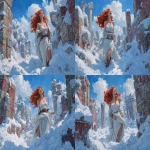
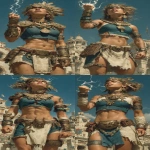










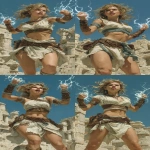
](https://images.ai-img.art/thumbnails/150/bc5b40f43007c984885fc5b035e0fd81d75554a8730895e067565a6b7050524b.webp)





](https://images.ai-img.art/thumbnails/150/33a7122c923d87ba243a3afa0b16a930f1603be27b8ac938ff7f4ae4f5140553.webp)


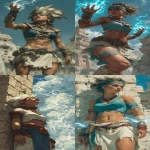


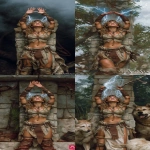



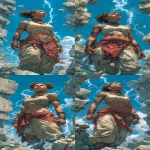
](https://images.ai-img.art/thumbnails/150/00df9b84a8818b4130bce9ca10c0c67ff2bc8952ca0fb5012dafc9b1c6378e67.webp)








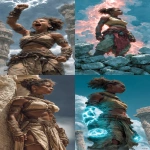
](https://images.ai-img.art/thumbnails/150/39c6bd41a1282b304a06fb11053bd009750b3879060719b1adb959228dbcd41a.webp)
